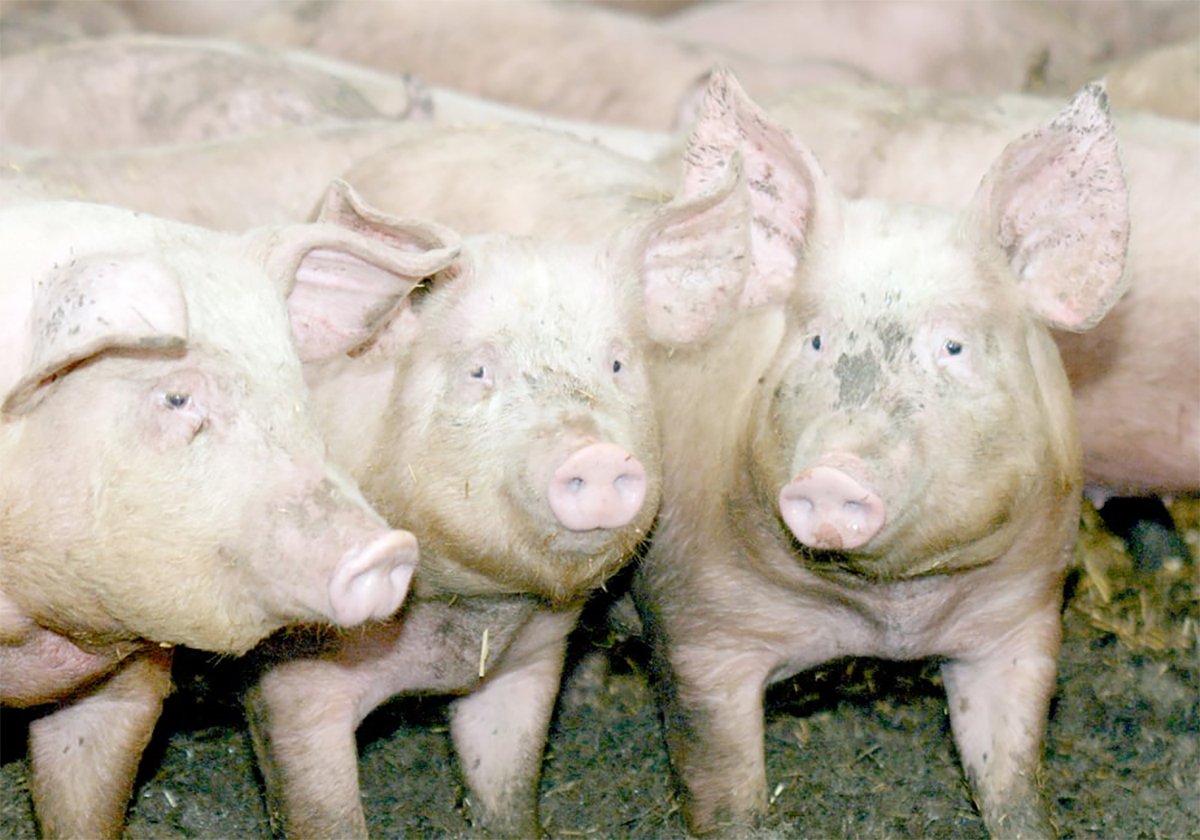JUMPING POUND CREEK, Alta. – For five generations, the descendants of John Copithorne at the Lazy J Ranch have tended the grasslands and protected the water coursing through Jumping Pound Creek.
For more than 25 years, that responsibility has rested with Alvin Kumlin.
This year, the Municipal District of Rocky View rewarded the family for its long-term care by nominating it for the Alberta Cattle Commission’s environmental stewardship award.
“It’s been a lot of work by previous generations,” Kumlin said.
“It didn’t start with me.”
Read Also

The Western Producer Livestock Report – October 2, 2025
Western Producer Livestock Report for October 2, 2025. See U.S. & Canadian hog prices, Canadian bison & lamb market data and sale insight.
Kumlin, his wife Ann and their teenagers Robyn and Matthew manage between 350 and 400 cows on 6,320 acres. Of that, 1,920 acres are leased.
The 2,800 acres at Jumping Pound make up one of the ranch’s two units. Of this, 780 acres are seeded to tame pasture and hay.
A summer pasture about 16 kilometres west of the home place provides grazing on native range from June to December, depending on the weather.
Kumlin does not believe in pushing cattle on the range. Rather, he prefers moderate grazing pressure on this fragile grassland.
“We’ve been taking care of our grassland so we’ve got a really strong, healthy native range.”
Intensive grazing before the grass is in full flush does long-term damage to the range.
“If you do it every year with too many cows, the productivity goes down.”
As a young man fresh out of the University of Alberta’s range management program in 1970, Kumlin never heard the terms environmental stewardship or riparian care.
Now he is being recognized for practices his family has used for more than 50 years to protect the river and the land.
“When I graduated, if you looked at my papers, I don’t suppose the word ‘environment’ was ever used. It’s a relatively new invention.”
He is part of a new generation of ranchers whose members earned university degrees and apply scientific principles to the environmental management of their ranches. He also joins a growing alumni.
Two previous environmental award winners, Francis Gardiner and Bernie Kotelko, also came out of the U of A agriculture program.
A major part of his award recognized his efforts to preserve the water quality and banks of Jumping Pound Creek. The stream begins in the Rocky Mountains and eventually links with the Bow River, a major water source for southern Alberta.
Cattle are fed away from the water and are only allowed on a few hard gravel bars to drink.
The rest of their water is provided in dugouts and through mechanical waterers.
The cattle are kept away from the creek’s edge during calving time by a single wire electric fence.
This deters cows from crossing and hiding in secluded areas on the other side. It also prevents newborn calves from falling into the creek. The benefit is clean, well-grassed banks that filter the water.
When John Copithorne homesteaded here in 1885, the creek was the only source of water for his cattle. Electricity’s arrival to the area made pumping possible, and the waterways started to improve almost immediately.
The Kumlin family also worked with Trout Unlimited’s Jumping Pound division by wrapping trees with wire to protect them against beaver damage.
It was learned in 1992 that the Jumping Pound is a spawning tributary for rainbow trout. The stream has since become a popular catch-and-release fishery.
Drought is not a likely threat this summer. Adequate spring snow provided enough runoff to fill the creek and dugouts.
Cattle are the operation’s bread and butter.
Since 1975, Kumlin has bred his crossbred commercial cows to Beefbooster bulls. He prefers a moderate-sized cow that is highly fertile with a shorter gestation period. They get pregnant sooner and are finished calving within a reasonable time.
Over the years, the cows have become increasingly productive. They wean more healthy live calves and more pounds of beef.
The cattle are sold through the Calgary Public Stockyards’ computerized auction. There is less stress for the cattle because they are moved only once and the same buyers come back year after year looking for solid, quality calves.
Kumlin, a direct descendant of John Copithorne, is part of a strong ranching heritage in the Cochrane, Alta., area. Much of the land has been held by the original families that settled there in the 1880s.
Living close to the sprawling suburbs of Calgary and country residential communities, Kumlin feels threatened not by the bulldozer, but by taxation.
Municipal taxes are now based on land’s agricultural value. He worries that in order to pay for services demanded by new subdivisions, the municipality may begin basing taxes on the land’s real estate value, which is likely 10 times higher.
He said that change could drive many ranchers out of business.
He also worries that good agricultural land that has been owned by families for more than a century could be sold to developers.

















